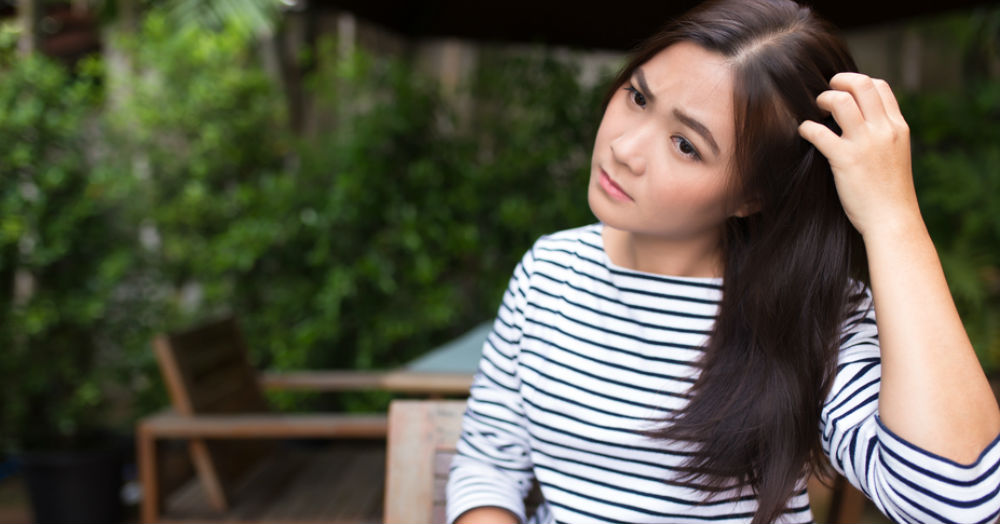
I’ve come across many women who have this misconception that dry scalp and unwashed hair causes dandruff. That’s not entirely true. Although the symptoms are similar, the causes differ. As far as dry scalp is concerned, the skin on the scalp gets irritated, itchy and falls off. It’s a different ball game with dandruff though. When your scalp gets oily, there is a buildup of dead skin cells that cause it to clump together and shed. Spotting white flakes on your top can be an embarrassing sight. However, with the right hair treatment you can take care of both conditions – but first, let’s tackle one beauty issue at the time!
What causes your scalp to dry up?
If the skin on your hands, legs and face are dry, your scalp is most likely to be dry too! This happens when your skin isn’t hydrated and moisturised. There are multiple causes to a dry scalp. Exposure to extreme cold and dry air could be one. Age could be another. Also, experimenting with new hair care products such as shampoos, hair gels, hairsprays, styling tools can dry the moisture from your poor scalp.
Also read: How To Remove Dandruff
Dandruff is more of a severe condition…
A condition known as seborrheic dermatitis and a fungus called Malassezia cause dandruff. In the first condition, the skin on your scalp starts to get oily, red, itchy and flaky. The moment that happens, expect to spot yellowish-white flakes on your clothes and hair. The fungus, on the other hand, causes skin cells to multiply and shed. If you scratch your hair, beneath your nails, you’ll spot a thick, grey coat of dandruff. Oil, sweat, dirt and dandruff are its components. Here again, this caused due to a balance of hormones, age and stress.
What makes the two different?
Their appearance, of course! Dandruff flakes appear oilier and larger in size. Why dry scalp makes your skin look scaly and rough. The flakes are smaller too! However, itching is a common symptom that they both share.
How to tackle the issue?
If it’s dandruff, you can treat it at home using an anti-dandruff shampoo. Keep in mind that product should not contain harsh ingredients like sulphates, alcohol, parabens, fragrances and bleach. If your condition worsens in spite of this, fix an appointment with your dermatologist. Try to keep your calm during stressful situations too. Yoga, meditation, regular naps, exercise, can keep your anxiety levels in check.
Also Read: Home Remedy for Dandruff
Things to keep in mind –
1. Don’t just apply a hair product without consulting your dermatologist or pharmacist first.
2. Follow instructions at the back of the bottle and read each word carefully before applying.
3. If you experience any itching or swelling post using the product, discontinue it immediately.
4. If you’re sceptical about using a product, tea tree oil is a great option because it’s packed with antifungal properties.
5. Game for home remedies? Try massaging your scalp twice a week with curd. Let it sit on your head for 20 minutes and wash it off with lukewarm water. You can also massage your scalp with coconut oil and lemon juice – it works like a charm I tell you!
Keep an eye out for these amazing products too!
1. Biotique Margosa Anti-Dandruff Shampoo & Conditioner (Rs 220)
2. The Body Shop Ginger Anti Dandruff Shampoo (Rs 645)
3. Biotique Margosa Anti-Dandruff Shampoo & Conditioner (Rs 127)
Images: Shutterstock